Ford F-150 Vs Ram 1500 Comparison: Truck Yeah

Trucks have come a long way from hay and sheep haulers.
The modern truck is as much at home transporting cedarwood blocks on your farm as making an entrance at a dinner party. You are more likely to be greeted by wrinkled noses if you arrive in hatchback than if you arrive in your half-ton workhorse of a truck. And no two trucks embody the multitude of roles these workhorses can fit into than the F-150 and the Ram 1500.
Get a Quote on a New Ram 1500 or Ford F-150For 2021 Ford introduced the 14th-generation F-150 with a hybrid engine that not only promises better mileage but also enhanced hauling and towing capabilities. A true multi-purpose half-ton. The Ram on the other hand goes the lux route. It adds a new Longhorn Limited 10th Anniversary trim, the one that we have here, and packs enough leather and wood to put full-size luxury SUVs to shame. It also comes with the eTorque system. The F-150 Lariat is the one you take to a construction site while the Ram is the one you want to arrive at a dinner party in. But is that strictly true?
Styling
F-150: Kyle prefers the Ford’s egg tray grille, and while I’m not too big a fan of it, I do appreciate the large glasshouse the Ford offers. The kink in the front windows considerably increases visibly and makes the truck look a tad smaller than it is and hence friendlier and less intimidating.
The evolutionary styling works and I feel the double stacked headlamps look better on the 2021 model.
Ram 1500: Where the Ford seems friendly and a bit sobered down, the Longhorn is all muscle and chrome. There’s two Harley-Davidsons worth of chrome on the grille alone. And despite the blinding effect it can have on a sunny day, I quite like it.
I wish I could say the same about the 20-inch wheels which are bathed in chrome, too. The traditional Ram design lines remain unchanged and the massive forehead up front is large and muscular enough to make even SUVs jump out of the way.
SEE ALSO: 2021 Ford F-150 PowerBoost Hybrid Review: This Isn’t Your Father’s HybridBottom Line: Though we’ve said time and again said that styling is subjective, I subjectively prefer the looks of the Longhorn compared to the F-150.
Interior and cabin space
F-150: To be fair, the F-150 Powerboost that we have here is the lower Lariat trim. So, while the cabin isn’t as luxurious as the Ram’s it’s nothing to scoff at.
It might lack the luxurious leather upholstery and open pore wood panels, but the cabin feels well put together and of high quality. Both trucks are equally spacious and comfortable. That being said, the F-150’s front seats feel a tad more supportive and less flat compared to the Ram’s.
But the foldable gear lever trumps the Ram’s center console setup. Where the Ram dedicated its center console solely to storage space, the foldable gear lever allows you to open the center arm rest that doubles up as a small laptop table. Understandably, you can only do this when the vehicle is parked.
It also gets physical HVAC controls which both Kyle and I appreciate compared to the Ram’s, which are a part of the touchscreen. You only get heated and ventilated seats at the front in the Ford while the Longhorn offers heating and ventilation in both rows.
Ram 1500: Open the door and you’re greeted to a cabin covered in swaths of tan leather and open pore wood. From the dash to the seats, to the doors, it’s all leather with wooden inlays. If the leather itself wasn’t enough, designers have thrown in tribal designs on all four doors for that added bespoke feeling.
But this isn’t the regular Longhorn; it’s the 10th Anniversary Edition, and Ram doesn’t want you to forget that. And if you’re a fan of the American Southwest, this is the cabin for you. The tan leather combines with embossed Longhorn 10th Anniversary badges on all seatbacks and a metal plate on the middle arm rest. While quite cool, it does tend to burn the elbows on a hot day. And there’s more: the front seatback pockets get engraved belt buckles to really drive that Southwest American feel home.
We would get into the headroom and legroom numbers at this point but there’s enough space to seat Shaquille O’Neal behind his own driving position. Plus, a panoramic sunroof adds to an already immense feeling of space.
The front seats are large, spacious, and comfortable—albeit a tad flat. You feel like you’re driving from an armchair, but I guess that’s the point. Side bolstering could be better, though.
Bottom Line: While the F-150 offers a more user friendly cabin, the Longhorn’s luxurious cabin is hard to ignore. Plus, with oodles of storage space and heating and ventilation in both rows, the Ram edges out the F-150 to win this category.
Powertrain, driving feel and fuel economy
F-150: Kyle never got tired of being treated to the absence of engine noise every time he thumbed the starter on the F-150. And I have to say, knowing that your large half-ton isn’t using any gas on start-up feels immensely satisfying.
Thanks to a pretty a large battery and motor making 570 lb-ft of combined torque, the acceleration off the line is immediate and seamless. But the 10-speed gearbox tends to be jerky when shifting to second and then to third. After that, you will hardly notice the gearbox working. The jerkiness between first and third gears tends to get annoying in the city however, especially in slow traffic. And there is no working around the bobbing heads.
Unlike the Ram, the F-150 comes with a conventional suspension setup. To quote Kyle, “the Ford feels more classic-truck. It’ll shimmy over bigger bumps, and you hear more of them.” Having said that, despite the stiff-ish setup, the ride is forgivable for the most part and people used to driving trucks will have little to complain about. Plus, the setup also ensures that a slight aggression in the corners isn’t punished. Body roll, though prevalent, isn’t unnerving or uncomfortable. The steering is light and friendly although a bit vague.
On the highway, it tends to settle into a nice rhythm and you will notice the rpm go to 0 rpm while coasting which helps with the mileage. Speaking of, during our time with it, I saw an mpg figure of 22 (10.8 L/100km) on the clock, in normal to heavy traffic conditions which is quite commendable for a half-ton truck. For quick overtakes, a firm dab of the right foot is all it takes. Though you do feel a bit guilty for using dinosaur juice.
Another commendable aspect of the F-150 are the brakes. They offer plenty of bite and feel conventional without any of the push back usually associated with regenerative brakes.
Ram 1500: Compared to the F-150, the Ram is more traditional. Not old school; traditional. It comes with eTorque, remember. But it still comes with a massive hemispherical V8, a 5.7-liter to be precise, which makes 395 hp and 410 lb-ft of torque. And it wakes up with a traditional V8 rumble.
The eTorque system, with the 130 lb-ft torque boost from a 12-kW starter motor, certainly helps with the initial push but the acceleration isn’t as immediate as the F-150. It is however equally seamless. A gentle initial push leans into a strong mid-range and you roll effortlessly away. The eight-speed automatic barely makes itself felt and feels a lot smoother compared to the F-150. Combined with an almost vibration free V8, the in-cabin experience is on par with expensive luxury SUVs.
A light foot is all you need be it driving around the city or leaping across the freeway. The 5.7-liter Hemi never gets shouty. Even at high rpms, all you hear is a well-tuned hum. But you would want to avoid the high rpms the best you can, for the that V8 is thirsty. The best I managed was 14 mpg (16.3 L/100km) overall.
Thanks to an adjustable air suspension setup, the Ram 1500 makes up for its lack of fuel efficiency with ride height adjustability and ride quality. It feels a lot more controlled over bumps and undulations. And the lateral movement too is minimal. An adjustable air suspension setup also offers other advantages like access height for underground parking lots and off-road height for, well, going off road.
It is also a lot more stable in the corners as well thanks to the air suspension. Combined with a more direct steering with a more consistent weight makes for a versatile truck that fits most driving situations.
SEE ALSO: 2021 Ford Ranger Raptor, Sorry, Tremor ReviewBottom Line: Again, as before, both trucks have their pros and cons. But the Ford manages a slight lead here thanks to the mileage the hybrid powertrain returns. It also feels a lot more manageable in the city thanks to better visibility and lighter steering. It is also as capable a highway cruiser as the Ram.
Cargo and towing
F-150: Ford offers an enhanced towing capacity of 11,000 lb as standard on the F-150. If you opt for the max trailer tow package, the capacity increases to 12,400 lb.
As for the hauling capacity, the 5.5-foot box offers a max payload of 52.8 cu-ft while the larger 6.5-ft. box offers a max payload of 62.3 cu-ft. The F-150 hybrid also comes with a power assisted tailgate which makes loading and unloading quite convenient.
Ram 1500: Kyle used the Ram for his engagement party. Even with all the supplies packed, the truck still had room to spare from its 61.5 cu-ft. of cargo capacity. The Longhorn comes with a 60:40 split tailgate which proves useful if you have a tonneau cover like our tester did as you don’t need to prop the heavy tailgate down every time you need to remove something from the back.
The RamBoxes on the sides provide extra storage for smaller items and a 115V socket. But we really wish the Ram came with a power-assisted tailgate like its rival.
Max towing capacity stands at 11,090 lb.
SEE ALSO: 2021 Toyota Tacoma Trail Review: Simplicity Is KeyBottom Line: Offering more towing capacity was one of Ford’s primary reasons for adding the hybrid powertrain to its F-150 lineup. And it seems to have worked. Plus, the power-assisted tailgate is a huge swing in the F-150’s favor as it takes the lead in this category.
Technology and features
F-150: An all-digital instrument panel in the F-150 is the first thing that catches your eye. It is one of the cleanest designs in the industry. The layout is simple and a bold font choice coupled with high definition graphics ensure great visibility in all conditions.
The 12.0-inch SYNC system is very user friendly and intuitive. Just like the instrument cluster, the SYNC4 screen favors large fonts and boasts high-definition graphics. You also get wireless Apple CarPlay and Android Auto. Both worked seamlessly for Kyle and me. The system connects to the smartphone within seconds of you switching on the vehicle.
As I mentioned before, we both appreciated the physical controls for the HVAC as they are easier to operate while driving. Our tester was equipped with the 502A Package that adds Bang & Olufsen sound, heated rear seats and rain-sensing wipers, along with a host of additional driver assist systems (more on that in a bit). The package adds $6,290 ($4,250 CAD) to the overall price.
For anyone looking for a workhorse of a truck, the F-150 offers a ton of features. You get two 2.4kW sockets for power tools and attachments. You can use the F-150 hybrid to even power a generator thanks to a 7.2kW (optional) socket in the bed. The tailgate even features a ruler and other measuring apparatus to make precision work easier.
The aforementioned 502A package also adds driver assistance systems like Ford Co-Pilot360™ Assist 2.0 — Intelligent Adaptive Cruise Control w/ stop-and-go, lane-keeping assist, speed sign recognition, evasive steering assist, intersection assist and connected built-in navigation.
We strongly recommend getting this upgrade as it adds the necessary driver assistance systems. And the adaptive cruise control on the F-150 also feels the more organic of the two.
Ram 1500: Ram’s traditional theme carries over to the cabin. The instrument cluster is the traditional twin dial setup. But a small digital screen in the middle adds a touch of modernity. Unfortunately, it pales in comparison to the clarity of the F-150’s instrument cluster.
Just like the Ford, the Ram offers a 12.0-inch touchscreen infotainment system. But the Uconnect4 here is vertically stacked and takes up the entire center dash. While the system works well and is intuitive enough, it pales in comparison to the SYNC4’s speed. Also, the HVAC controls reside inside the screen and only tethered phone projection is available. Its fantastic native navigation system is worth mentioning though. I rarely find myself favouring the native system—instead, Google maps—but the Uconnect4’s navigation is one such system. The Ram also comes with a well laid out head-up display, something the F-150 lacks.
The adaptive cruise control however could have been better. The lane keeping assist works but tends to oscillate between the lines. Also, the braking can be a bit unpredictable at high-speeds. Having said that, the system copes well under 62 mph (100 km/h).
As for driver assistance systems, compared to the F-150, the Ram offers virtually nothing as standard. Even forward collision warning and auto emergency braking with pedestrian detection–standard on the Ford–are a part of the Level 1 Safety package.
SEE ALSO: Jeep Wrangler vs Toyota 4Runner ComparisonBottom Line: While the F-150 lacks a heads-up display, it offers a more intuitive infotainment system, wireless phone projection and enough sockets to power an apartment building. But it wins this category primarily because it offers a better standard safety suite than its rival here.
Pricing
F-150: The base XL trim is available as a hybrid but with the Super and Crew Cab configurations only. SYNC4 is standard across the range as is the auto emergency braking with pedestrian detection. Prices for the base hybrid start from $37,665 ($45,504 CAD) and top out at $81,820 for the fully-loaded Limited Hybrid trim.
The Lariat Hybrid that we have here starts from $48,140 ($60,140 CAD) for the Super Cab while the base Lariat Super Crew Hybrid starts from $52,655 ($64,140 CAD) before options. If you add options like the 7.2 kW socket, max trailer tow package, tailgate work space and the 502A equipment package that adds goodies like adaptive cruise control and B&O sound, like the one we have here, you are looking at adding upwards of $16,000 in options. All options in, the Lariat Hybrid will cost you $70,825 ($83,715 CAD) including destination.
Ram 1500: Compared to the hybrid Ford, the Ram 1500 starts from a relatively lower $34,490 ($48,110) including destination for the Tradesman. But then it should, as there is no hybrid on offer and the standard safety suite is pretty bare.
The Longhorn trim starts from $53,975 while the Longhorn V8 that we have here starts at $56,770 ($76,110 CAD) before options. Our tester comes with all options like Technology group 1 with the 19-speaker Harman Kardon speaker system and rear ventilated seats, Tech Group that adds the HUD, 10th anniversary aesthetic treatment, advanced safety group that adds all the driver assist systems like adaptive cruise control, lane keeping assist and emergency braking with pedestrian detection among other, the RamBox and panoramic sunroof. In total, the options add over $18,000 to the price bringing the total to $76,130 ($94,600 CAD) which makes it the top trim before you move to the TRX.
Bottom Line: Taking gas versions into account, the F-150 actually starts at a lower price of $30,985 ($36,074 CAD) for the XL base. Speccing out the Ford with convenience features and the hybrid powertrain does make it more expensive but you also get a better standard kit and a hybrid engine. But if you’d rather skip on the luxury bits, the F-150 hybrid manages to undercut the Ram every step of the way.
Verdict: Ford F-150 vs Ram 1500 Comparison
The trims featured here are not evenly matched, we admit. The Platinum or Limited F-150 would have been a better match on that front. But despite the trim mismatch, there is no getting away from the fact that the F-150 offers a more modern package. Even in the lower Lariat trim, you get the superior infotainment, wireless phone projection and an all-digital instrument cluster.
In addition, you can equip the F-150 with a 7.2kW socket along with two 2.4kW ones if you’re looking for a truck for the worksite. Yes, the Longhorn offers more luxurious trappings and high quality materials, but so does the F-150 if you go higher up the trim walk.
Then there is the hybrid powertrain, which is the biggest advantage of all. If butch looks and road presence are all you care about, the Ram would be the ideal choice. But for almost every other possible scenario the F-150 hybrid is the better package, and the winner of this test.
Become an AutoGuide insider. Get the latest from the automotive world first by subscribing to our newsletter here.

More by Kshitij Sharma







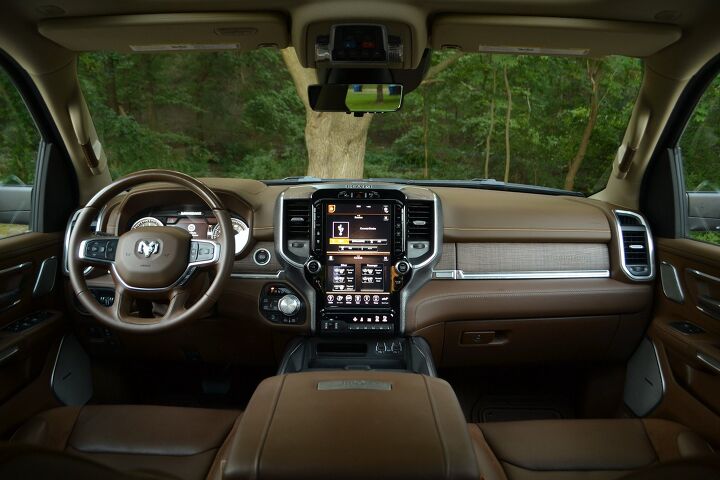


























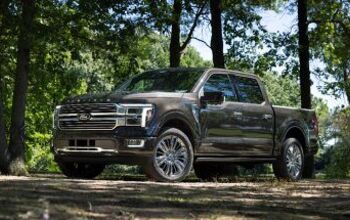

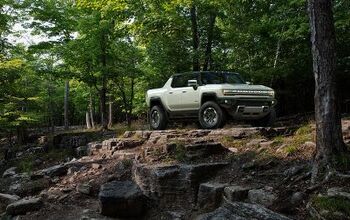
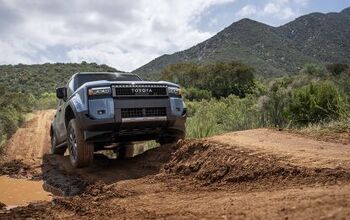

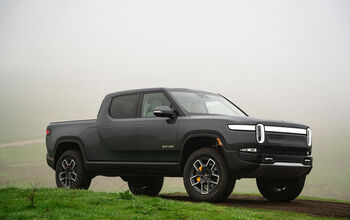




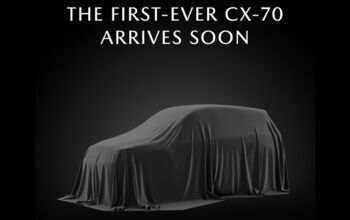


Comments
Join the conversation